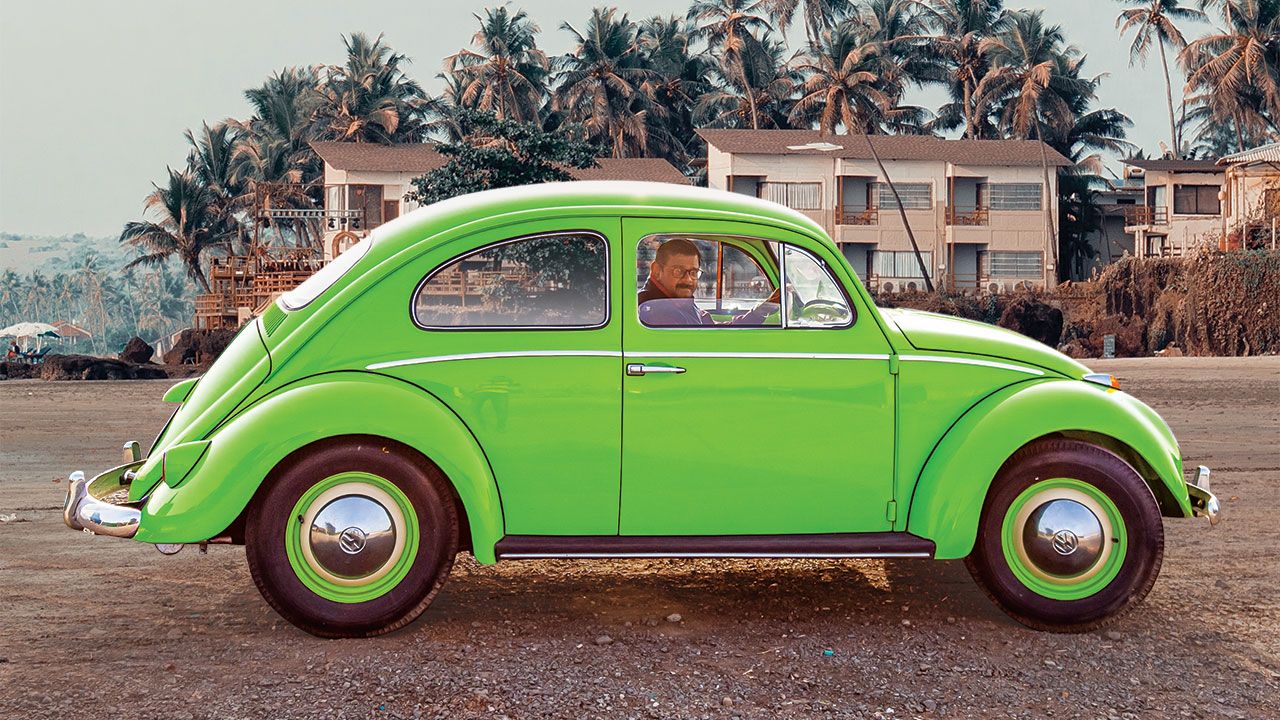
Women look at me when I’m driving my car and exclaim, “Cho-chweet!” their hearts going aflutter, with billions of cartoony love emojis exploding at the top of their heads. They are barely able to hold themselves back. Disclaimer: I am generally cute, but not as much as my effervescent green 1960 Volkswagen Beetle that they are actually going ga-ga over. The Beetle is easily the most famous of all the ‘cute-looking’ cars on the planet, justifiably so, with its rounded body and ‘how could you leave me without giving me a hug’ look that tugs at your heartstrings.
Well, I call my Bug Miriam and carry on having (usually) heated conversations with her, completely ignoring others around me who wonder whom I’m talking to. My car is after all a non-sentient machine, built from sheet metal, plastic, rubber, cast iron and chrome, but I attribute it human characteristics – this phenomenon is called anthropomorphism, that of giving human characteristics to inanimate objects or sometimes even non-human living beings, like your pet. It was taken to great heights in the Love Bug series of movies, remember them? Speaking of movies, take any of the killer robots, droids or drones in sci-fi movies like Star Wars, Terminator, Matrix or the Transformers series and all of them look universally evil and menacing, while the ones that are friendly to humans inevitably look trustworthy. A classic example is the BB-8 droid from the Star Wars sequels and its twin, the BB-9E – one is friendly, and the other one is evil. How? A minor change in form and the colour scheme, that’s all it takes.
There are multiple examples of anthropomorphic design in objects all around us, whether it be cartoon characters, designer perfume bottles, Google Maps giving you directions, Siri answering your questions and even animated interfaces like the Personal AI Assistant in the MG Astor. With the astounding development in Artificial Intelligence, as seen in ChatGPT, where you can actually have a conversation with a machine the way you do with another human, anthropomorphism is going to go ballistic across applications, even in automobiles. But this column is not about AI, but about the emotions that are devised to be evoked via design.
Also Read: While EVs Liberate Designers & Product Planners, Some Form Factors Left Behind
What is the reason for designers to adopt anthropomorphism in the objects that they design? Well, the reason is that we humans tend to connect with human-like objects better and develop an innate emotional attraction to these over the non-humanoid variety. This can be a powerful tool for brands and products. The snarly face of a Mustang or an angry Lamborghini is designed to look that way. Today, even the regular cars that we all own and drive seem to look aggressive and throw attitude, as if to keep others away from touching you. Others are designed to look snooty.
But this is for today. What happens tomorrow, when fully autonomous or self-driven cars start becoming popular? Or how can we humanize public transport to make it more approachable and friendly to all? What about two-wheelers, especially of the electric variety? Should commercial vehicles be inanimate or should they also be designed to have an emotional bond with the driver or owner? These are questions people in the mobility industry will need answers to soon.
In 2014, a group of three researchers from three US universities got together to measure people’s responses to autonomous cars that were more anthropomorphic versus those that were not. They found that people considered human-like cars to be intelligent and trustworthy, and capable of taking the right decisions. Furthermore, in a test which involved an unavoidable collision caused by another car, they blamed the humanlike car less for the crash compared to the other one they were driving, which was sterile in design. Even the participants’ heart rates were at reduced levels during the collision versus the other one! As one of the researchers put it in an article, “Our study showed that simple autonomy made people see the car as a responsible agent, but adding humanlike features generated trust and assumed competence.”
The implications of anthropomorphism – which acts at a subconscious level – in automotive design, especially in tomorrow’s cars, which are expected to have a greater level of self-governing technology, are quite profound. Not just cars, but mobility, in general, will have an impact. Combined with AI, we are looking at a new era altogether which will be approachable, friendly and trustworthy, rather than creep people out. As for me, I request the ladies to form an orderly queue, please.
Also Read: Vulnerable road users in India are at high risk. Yet, they seem to be invisible























Write your Comment